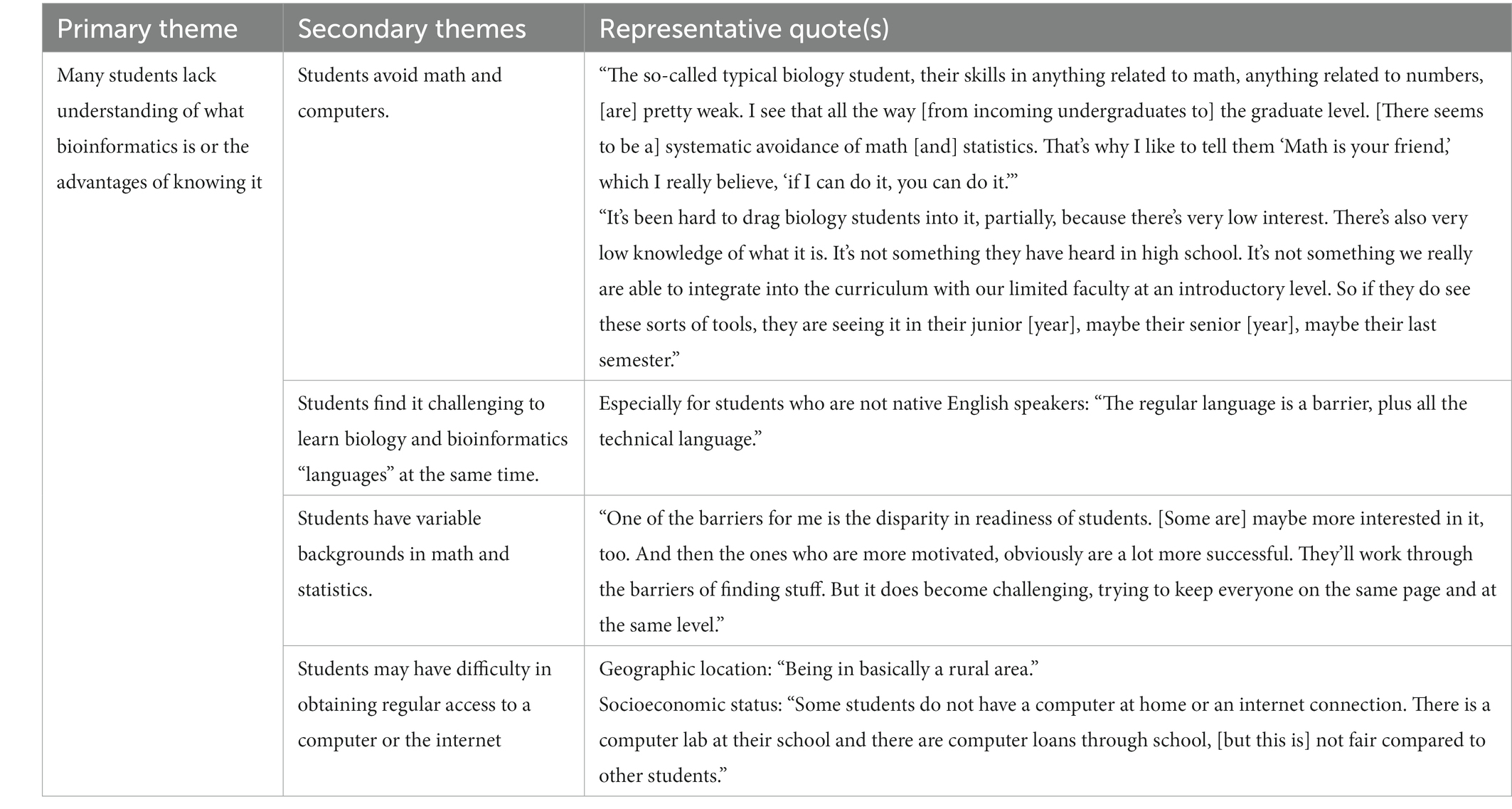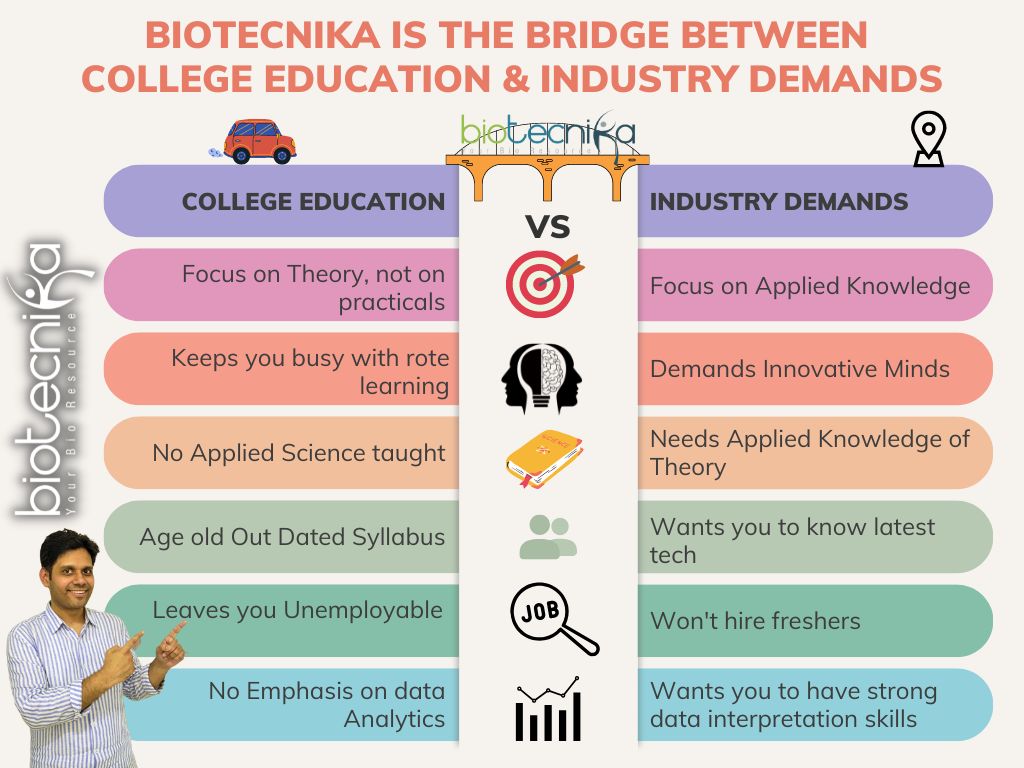Some Ideas on Bioinformatics Tutor You Need To Know
Some Ideas on Bioinformatics Tutor You Need To Know
Blog Article
The Main Principles Of Bioinformatics Tutor
Table of ContentsBioinformatics Tutor - QuestionsBioinformatics Tutor Fundamentals ExplainedThe 5-Second Trick For Bioinformatics TutorRumored Buzz on Bioinformatics TutorGet This Report about Bioinformatics Tutor
Of the overall individuals associated with the training, 80% were trainees from public college organizations, while the continuing to be 20% came from exclusive institutions. To get approved for a certificate of engagement, pupils were required to go to at the very least 90% of the total training hours. As a result of this need, a remarkable 95% of the individuals successfully acquired their certifications, having not only fulfilled the minimum presence requirements yet additionally completed all designated tasks throughout the training.
During the elevation of the COVID-19 pandemic, particularly in between June and August 2020, the project group was entrusted with organizing specialized training in bioinformatics. This training was specifically intended at trainees from the study team Center for Study in Applied Computing at the Federal University of Pará (UFRA) The adaptation to remote learning systems due to the pandemic developed a chance to discover new mentor approaches and digital devices that improved both reach and efficiency.
This course was developed to give an available yet comprehensive overview of Artificial Knowledge techniques, specifically as used in bioinformatics (Bioinformatics Tutor). This virtual style enabled participation from trainees throughout Brazil, several of whom could not have had the chance to attend in-person sessions.
Everything about Bioinformatics Tutor
A notable function of this course was its emphasis on hands-on knowing. Around 50% of the complete training hours were devoted to useful activities where trainees constructed smart designs and applications in a variety of clinical domains, including genetics, molecular biology, and ecological information analysis. Widely used frameworks and devices such as Spyder, Google Colab, Jupyter Notebooks, and Orange were incorporated right into the coursework. These systems allowed pupils to take part in real-time information adjustment, design training, and algorithm testing.
The course brought in 80 participants in overall. Sixty of them were connected with numerous higher education establishments in the state of Pará, while the remaining twenty came from organizations located in 5 other Brazilian states. This broad geographical depiction highlighted the national passion in bioinformatics and the expanding need for specialized skills in this location. By introducing Artificial Knowledge in a appropriate and sensible context, the campaign served to bridge the gap in between theory and real-world application, giving trainees with a strong structure for future study or work in the area.
The training campaign developed part of a more comprehensive academic outreach initiative called the Bioinformatics when driving project. This job has, over the years, presented loads of trainees to the world of bioinformatics and computational biology. The occasions held under this umbrella campaign have occurred throughout several areas and years, as summarized in Table 1 (Checklist of events, areas, years, and complete varieties of trainees and instructors)
Among the most exceptional end results of the Bioinformatics when driving campaign has actually been its payment to the published here development of decentralized research study teams. Numerous of these teams, at first brought together by their involvement in training occasions, have actually because gone on to create independent clinical research in partnership with neighborhood scholastic organizations. The training not just fostered scientific reasoning within the context of bioinformatics however also sparked collective relationships that prolonged beyond the training atmosphere. These collaborations have caused increased regional scientific productivity and added meaningfully to the development of the broader bioinformatics area in Brazil.
The 8-Minute Rule for Bioinformatics Tutor
The task itself was conceived and arranged by MB and RR, that supervised the preparation and application of each action. Lectures were supplied by a multidisciplinary group including megabytes, FA, EF, KP, JS, DM, SN, LP, LG, IH, rr, and ac. The same group, omitting IH and RR, additionally functioned as tutors for the functional training modules. Funding for the project was provided with the grant 88887.200562/ 2018-00 from CAPES. The authors prolong their thankfulness to everybody who added to the understanding of this job, whether straight or indirectly, considering that its creation.
The Federal University of Pará's Office of Study (PROPESP/UFPA) also provided financial backing, specifically for the production of the last manuscript. The writers state no industrial or economic disputes of rate of interest that might have influenced the research. Moreover, all point of views and interpretations revealed in this short article are entirely those of the authors and do not always show those of their respective institutions, the publisher, editors, or reviewers associated with the publication process.

Our Bioinformatics Tutor Diaries
From a pedagogical viewpoint, the training method used in the training was intentionally interactive. Courses were conducted in a way that encouraged student involvement and conversation, surpassing memorizing memorization to discover just how concepts are established, applied in day-to-day live, and examined in academic settings. The instructional approach concentrated on nurturing both solid and having a hard time pupils, providing customized support, and structure confidence with continual mentorship and perseverance.

Each team, consisting of approximately 36 participants, was supported by three coaches-- a lot of whom were postdoctoral scientists with customized experience. These coaches not only helped make the team tasks yet also facilitated their execution, ensuring that each research study inquiry was both appropriate and suitably challenging. The goal was to offer a biologically realistic context that view website individuals can check out with open-ended objectives and access to curated datasets.
For added understandings into the approach and results of this project-based knowing method, readers are directed to S1 Text, that includes in-depth summaries of the pedagogical structure, examination strategies, and job motifs used in the training sessions.
The smart Trick of Bioinformatics Tutor That Nobody is Discussing
Of the total individuals entailed in the training, 80% were pupils from public greater education and learning organizations, while the staying 20% came from personal institutions. To certify for a certificate of involvement, trainees were called for to participate in at least 90% of the complete training hours. Notably, beyond the pupils that enlisted in the training sessions, 7 knowledgeable trainers got involved in providing the training courses, while three dedicated research study professors collaborated the general training process. Around 50% of the total training hours were devoted to functional activities where trainees constructed smart versions and applications in an array of scientific domains, consisting of genetics, molecular biology, and environmental information evaluation. The training not just cultivated scientific thinking within the context of bioinformatics yet also stimulated joint relationships that expanded beyond the training atmosphere.
Report this page